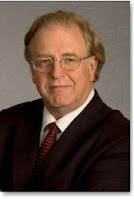In the sky. It’s a bird. It’s a plane. No, it’s … a drone?
With apologies to the opening seconds of the classic 1940s-50s radio and TV show “The Adventures of Superman,” a flying object high overhead today is increasingly likely to be an Unmanned Aircraft System — a “drone” — rather than superhero.
And while there are reasons that can lead us to cheer or fear these new eyes-in-the-sky, the focus of late has been more “grounded” in a real concern that has nothing to do with complex issues like privacy, free press and the like: The worry that one of the multi-rotor, camera-toting things will crash, and injure or kill someone.
The highest-profile examples of that threat include a drone that crashed into an empty seating area during a recent U.S. Open tennis match, leading to the arrest of a New York teacher who operated it. Just days later, a drone crashed inside the sold-out University of Kentucky football stadium during pregame action. A student was arrested.
The Associated Press reported in August that the U.S. Forest Service lists 13 wildfires this year in which suspected drones interfered with firefighting aircraft — 11 since late June, and five drones at one time over one recent fire. In the 2014 fire season, only four incidents were reported all year, the story notes.
None of these identified flying objects were being operated by reporters or news photographers, but concerns over potential peril may well restrict the legitimate reach of a free press — as lawmakers decide to enact laws that are too restrictive or that just won’t work around newsgathering.
We’re very early in the “season of the drone.” Only a few years ago, such flying instruments were the stuff of the U.S. military — whether equipped with a camera or missiles — or a few hobbyists. Not so now. The AP story cites a Consumer Electronics Association prediction that U.S. sales will reach 700,000 this year, up from 430,000 last year and 128,000 in 2013.
Lawmakers at various governmental levels are in the process of developing regulations to accommodate this spectacular growth and newly developed sophistication in navigation and photography. Currently, the FAA allows drones up to 55 pounds to be flown up to 400 feet for non-commercial purposes, in daylight hours, in line-of-sight of the operator. A number of states also have their own rules in place.
Last week, California Gov. Jerry Brown vetoed a proposed state regulation that would have meant much tighter restrictions in that state, including the need for advance fly-over permission from property owners. In a Sept. 3 letter to Brown, 34 news media groups and companies had voiced their opposition to the legislation. (Tech and commercial giants like Google and Amazon also opposed the law, for their own commercial reasons).
The news coalition letter said the law failed to recognize the difficulty of determining a drone’s exact location, and that “it will be daunting if not impossible for journalists to obtain the ‘express consent’ from a wide range of property owners … especially during breaking news events.” Also, as the letter asked, “What about a government owned sidewalk, park, riverbed, beach or road … or an apartment building with 100 tenants? Or an empty field … ?”
There are legal and ethical issues involving newsgathering and drones, including privacy, police surveillance, interference with police or firefighting activity, and the potential for injury — but there also are benefits: More accurate and less-disruptive news coverage of civil disorder or mass demonstrations; safer and better news reporting from natural disasters and calamities like raging forest fires; and new perspectives on stories that involve large areas, from zoning and land-use topics to farm crop reports and search-and-rescue operations.
A coalition of 15 leading news media companies began testing news drones in June, in cooperation with a Virginia Tech University group and the National Press Photographers Association, simulating news events that the media can safely report on using small UAS technology.
“This is just another tool in news gathering,” said Mickey Osterreicher, general counsel for the National Press Photographers Association. “Aerial photo has been around forever. This just becomes a much more affordable and safe way to get aerial footage.”
Initial fears over use and safety of “motorcars” more than 100 years ago led to a Vermont law that required a person to walk in front of a car carrying a red warning flag. Some areas banned motorized vehicles altogether.
The improper, illegal and dangerous actions in recent weeks by a few inept thrill seekers should not lead legislators and government official to ignore the recommendations and concerns of journalists working to develop ethical and operational guidelines for use.
Drones overhead — whether being operated by police, journalists or hobbyists — are not going away, even if some may look to the heavens and wish that they would.
About the author: Gene Policinski is chief operating officer of the Newseum Institute and senior vice president of the Institute’s First Amendment Center. Email: gpolicinski[at]newseum.org. Twitter: @genefac.
This article was published by the Newseum Institute.
Subscribe to:
Post Comments (Atom)



No comments:
Post a Comment